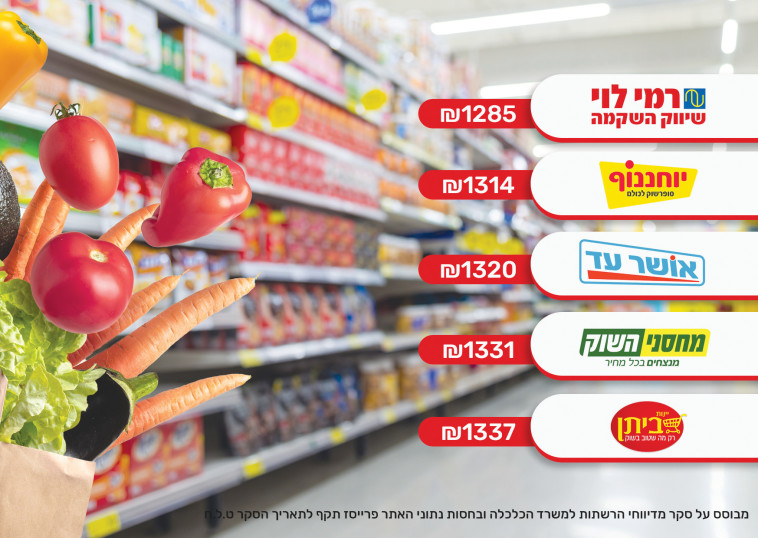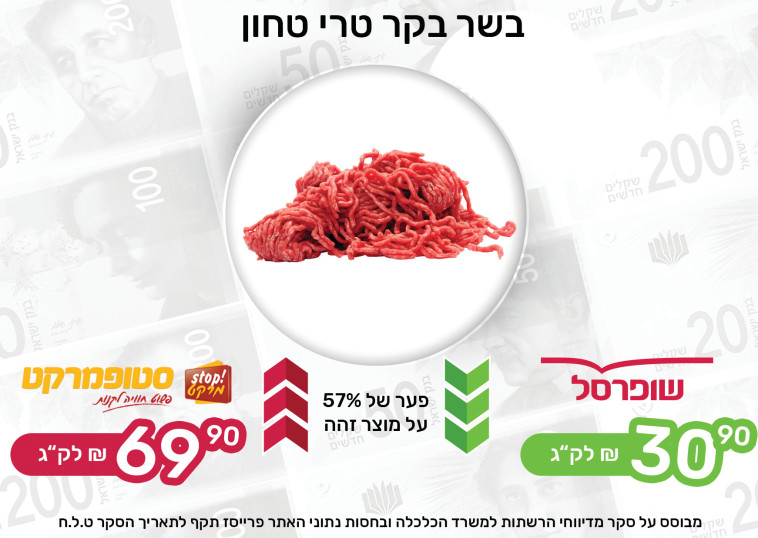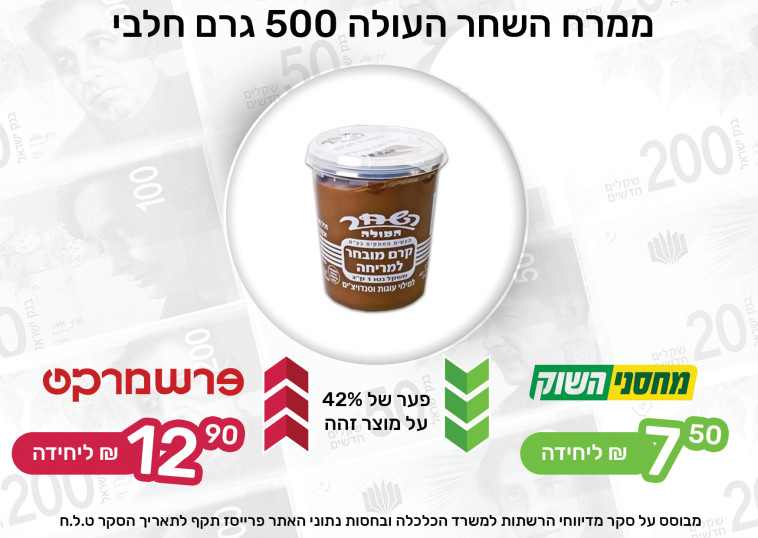What is different tonight? That Passover eve this year reminds us that we have been in a global crisis for more than a year that is reshaping our consumption habits. And how does the corona affect our consumption patterns before the holiday?
Testimonials from executives and owners of retail chains indicate that the pace of work is different from what they have been familiar with in years past, and there is a clear reason for this: buyers do not know what to expect on the eve of this year’s holiday. Can we host and be hosted freely? Will the number of people at the holiday table be limited? In the event of an increase in morbidity, are we expected to close further? The uncertainty causes many Israelis to postpone shopping for the holiday meal until the very last minute.
What is the difference between consuming a multi-participant meal and a limited holiday meal? Well, it’s not just about preparation and cooking. A significant percentage of the promotions we are exposed to in the marketing chains are conditioned by various things such as the full price on the first unit and the discounted price on buying four units, the price per one kilogram of squash compared to the price of 4 kg.
We are used to seeing quantity sales in the wine category in the retail chains, but the dilemma of buyers and patterns of wine consumption per capita in Israel (a topic discussed extensively in the coming weeks) is different from consumption in Europe, so four bottles may be too large for an average Israeli family.
- Just before the 2021 elections: Senior members of the 2021 parties answer the difficult questions
 Marketing Network Rankings (Photo: Graphic Processing: Daniel Malachovsky)
Marketing Network Rankings (Photo: Graphic Processing: Daniel Malachovsky)Where do we do our concentrated shopping? The retail chains are divided into two main segments: small and neighborhood urban stores, which usually offer a relatively limited range of products, and discount stores, which are usually outside city centers, industrial areas or shopping centers, large and accessible large stores with a wider range of products, large service departments and of course specials More attractive, designed to make the consumer move his car and drive to shop with them.
The price differences between the urban stores and the discount stores are significant and may reach a level of 30% for the holiday shopping basket. Despite the considerable gap, if we look at our buying habits, we will find that at least 40% of household expenses are actually made in urban stores, more frequently and at a lower cost per purchase.
In other words: a customer can purchase daily in his neighborhood store for an average of NIS 50 per purchase, which will add up to NIS 300 per week. This is in front of a concentrated purchase in a discount store once every two weeks, in the amount of NIS 800. In such a purchase, the buyer will carefully examine the various promotions, because the purchase takes on a different meaning in his eyes and becomes more significant.
In the various surveys we conduct for the marketing chains in the process of examining the establishment of new stores and examining the strength of the brand, we discover a surprising statistic: although buyers indicate that the price parameter is the main and most important influence for them, in practice it is not. The main influence is our buying habits: customers relate to price, but they like to buy in a familiar and accessible environment, where they know where each product is placed and how things are conducted.
The shopping experience has great significance. It turns out that there is a different interpretation of the shopping experience between customers, but there are parameters that all customers are not willing to be flexible about: cleanliness and freshness. The customer knows how to deal with a higher price, and sometimes he also “likes” to complain (for many customers this is part of the shopping experience), but regarding cleanliness, sterility and freshness (especially against the background of the past year) there is no flexibility and forgiveness on the part of buyers. They are not willing to compromise on these.
 Ranking of retail chains (Photo: Maariv Online)
Ranking of retail chains (Photo: Maariv Online)Do not compromise on quality
Once we have purchased cleaning products and complementary products for home care, we refer to a concentrated purchase for the holiday. In this purchase we will invest more in the variety and fresh meat and chicken products and allow ourselves to indulge in more selected cuts than we are used to buying every week. There are also products that the consumer culture dictates during the holidays, for example, roast beef – even among families who are usually satisfied with chicken.
The “master chef” culture also has an impact on our shopping list. Suddenly we see an increase in the consumption of fine cuts that were less popular until recent years – this is how it is in an age where the way the dish is photographed is no less important than its reasons.
The host customer is not willing to compromise on the eve of the holiday, not only on the meats but on most of the basket products. The vegetables and fruits must be selected, the wines fine and more. By the way, in preparation for the holiday meals, the host does not tend to replace the familiar rice or chicken soup brands, since for him this is not the time to be tempted by an alternative product that may change the taste of the familiar dish.
The cleaning materials and care products will enter the shopping basket for the holiday only following great exposure and attractive promotions. If they are not part of our regular holiday basket, we will simply ignore them.
Almost all chains try to present cheap shopping baskets, but will a large difference in the price of the shopping basket make us abandon our familiar and convenient store and move to competitors? The answer is clear: when the gap is negligible, we will stay with the seller for us. But as the gap widens, the buying experience will not always justify the choice of a more expensive place, and the customer may abandon his regular network and check out the cheaper competitors. If they are indeed significantly cheaper, there is a reasonable chance that he will stay with them as a customer even after the holiday.
 Comparison of freshly ground beef (Photo: Maariv Online)
Comparison of freshly ground beef (Photo: Maariv Online)
So what’s in the basket?
The shopping basket we reviewed this holiday includes the main shopping items for the holiday, a basket of vegetables and fruits, fresh meats and poultry, frozen vegetables, preserves, wines, matzahs, drinks, snacks, pastries, detergents and products designed for Passover. One of the phenomena we have observed this holiday is the dynamism and response of the chains to prices and promotions.
Today’s price is not yesterday’s price, and probably not tomorrow’s. We found many gaps within the same network only in a different geographical area. Environmental competition benefits the buyer, and in areas where competition is poorer, you will probably pay more for the same product and even on the same network.
A personal recommendation is to plan your shopping and make a shopping list (and of course leave room for temptations as part of the shopping experience). With a list, you can examine the prices on the online comparison sites and on the networking sites and know in advance where it pays to make the purchase.
The author is the founder and CEO of the Institute for Retail Research
 Comparing the Price of the Dawn Chocolate Spread (Photo: Maariv Online)
Comparing the Price of the Dawn Chocolate Spread (Photo: Maariv Online)